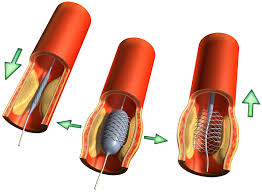 This study demonstrates that multivessel coronary artery disease is common in survivors of acute myocardial infarction and is especially common in patients with history of a remote antecedent myocardial infarction and in patients with angina post-infarction. Furthermore, it was found that coronary angiography could be performed safely within 30 days after myocardial infarction in stable patients and with mild risk in those having a complicated convalescence.
This study demonstrates that multivessel coronary artery disease is common in survivors of acute myocardial infarction and is especially common in patients with history of a remote antecedent myocardial infarction and in patients with angina post-infarction. Furthermore, it was found that coronary angiography could be performed safely within 30 days after myocardial infarction in stable patients and with mild risk in those having a complicated convalescence.
Clinical Characteristics
Although there was a greater proportion of angina in the angiography group and congestive heart failure in the non-angiography group, the post-infarction clinical convalescence and location and extent of infarction by ECG were not significantly different between those who had angiography and those who did not. Theoretically, those patients undergoing late angiography could have had progression of their disease although the percentage with multivessel disease was similar in the early angiography group (73 percent) and in all patients undergoing angiography (75 percent).
We can only speculate as to differences in the extent of coronary disease between those who had coronary angiography and those who did not Among the clinical parameters evaluated in this study, age and sex were the only significant differences between these two groups. These differences may be explained by our decision not to study asymptomatic patients over 70 years of age, and women sustaining myocardial infarctions at a later age than men. Thus, there may be differences in the extent of coronary artery disease between those who had coronary angiography and those who did not, possibly because of differences in age and sex.


 Angiographic studies have shown that the severity of coronary artery obstruction and the degree of left ventricular dysfunction are two major factors influencing survival in patients with coronary artery disease. Since most patients with myocardial infarction have coronary artery disease, coronary angiography is often recommended in symptomatic patients post-infarction, but remains controversial in asymptomatic patients. Angiographic studies of survivors of myocardial infarction have suggested a high incidence of multivessel coronary artery disease treated with remedies of My Canadian Pharmacy, but most of these studies have been limited by strict selection criteria for the study population.
Angiographic studies have shown that the severity of coronary artery obstruction and the degree of left ventricular dysfunction are two major factors influencing survival in patients with coronary artery disease. Since most patients with myocardial infarction have coronary artery disease, coronary angiography is often recommended in symptomatic patients post-infarction, but remains controversial in asymptomatic patients. Angiographic studies of survivors of myocardial infarction have suggested a high incidence of multivessel coronary artery disease treated with remedies of My Canadian Pharmacy, but most of these studies have been limited by strict selection criteria for the study population.